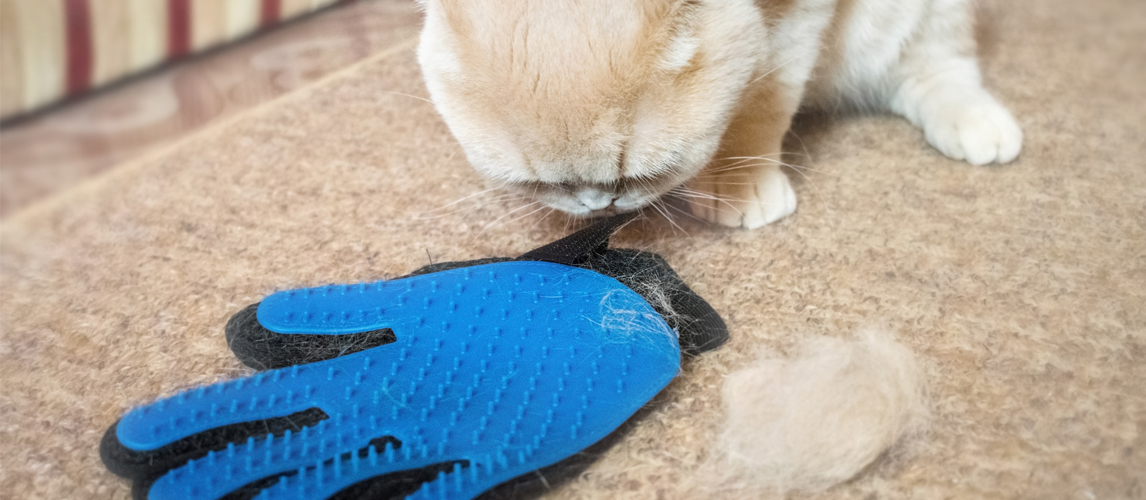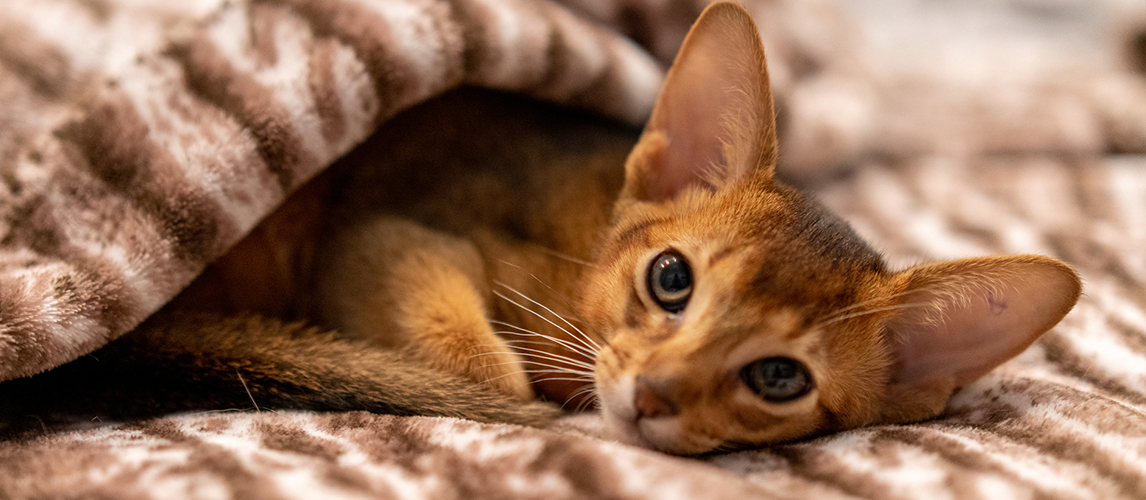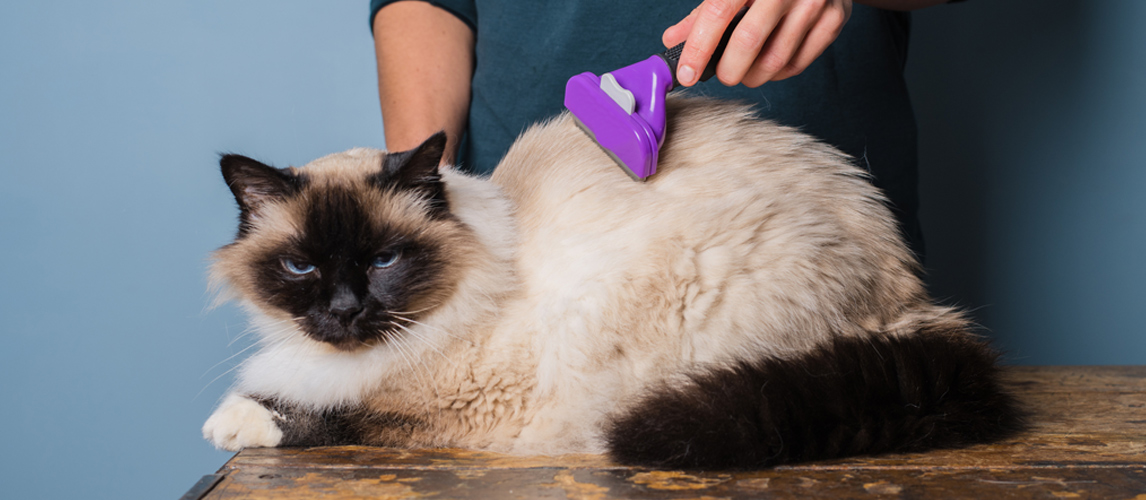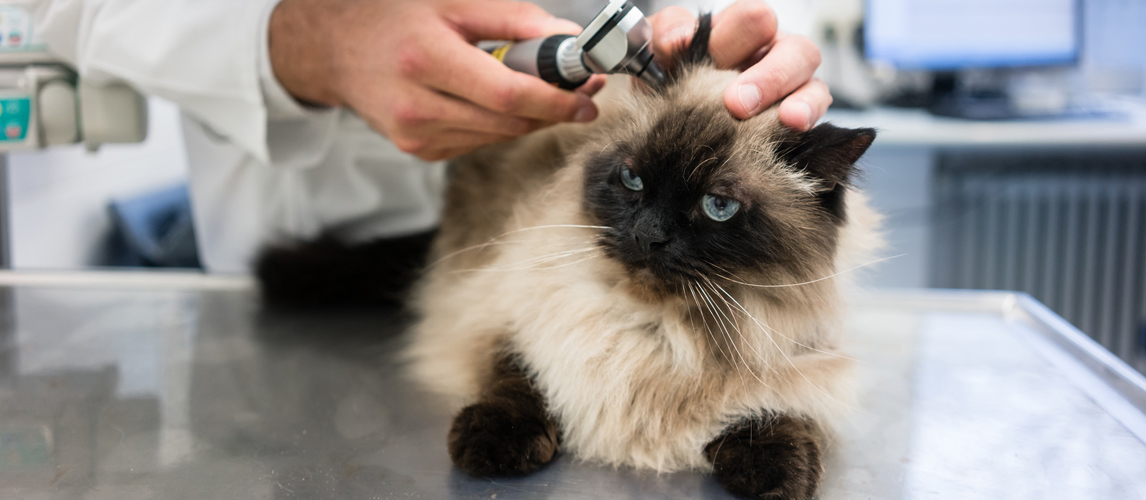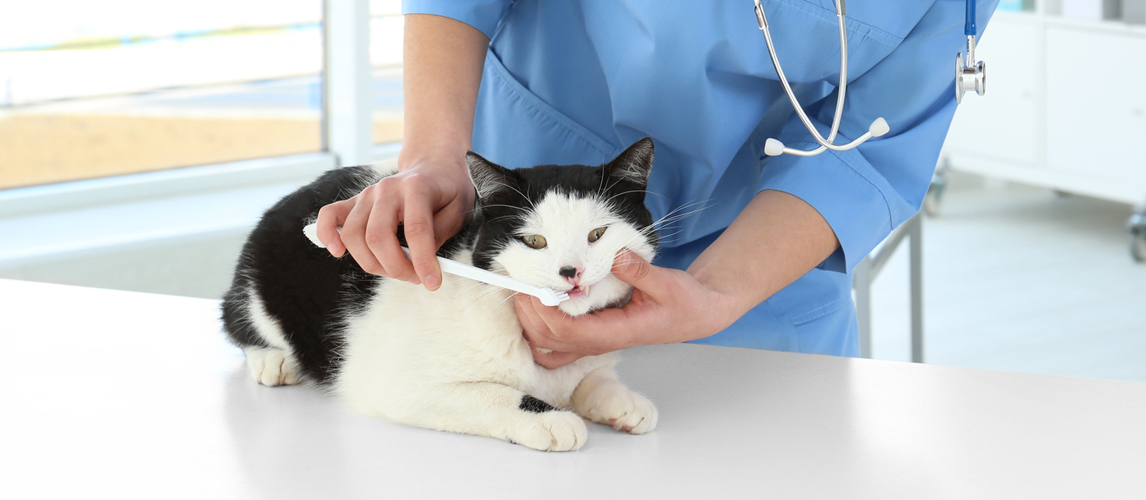It’s not generally something many cat owners feel the need to address, especially if the owner is living in a cooler climate. But with any particularly long-haired cat breed in hot climates, it’s something worth pondering – can you shave a cat? We all know cats are very clean creatures by nature that spend a lot of their time grooming themselves, but is it okay to remove your cat’s fur if you feel it is necessary? Here we have broken down not just the reasons for shaving a cat’s fur but the effect it would have on your cat to help you understand if it would be worth it.
Why Do Cats Need Fur?
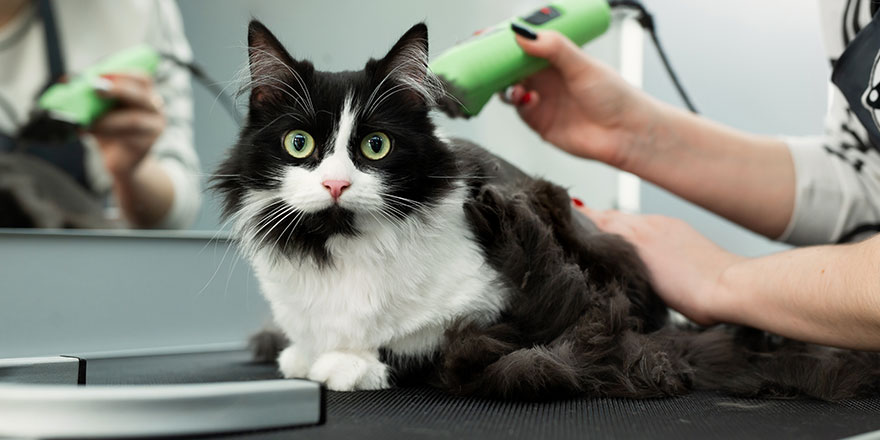
There is a multitude of reasons why cats need their fur day-to-day. Even we humans have fine hair all over our bodies that helps to protect our skin and serve various purposes. In addition, cats are built for survival outdoors – as a result, they very much require their fur, especially seeing as many cats are outdoor cats and often exposed to the element. So here are the main reasons a hat requires its fur:
To Regulate Body Temperature
The main reason cats have their thick coat of fur is to protect them when they’re out and about in the world. Fur doesn’t only keep a cat’s body warm in cold temperatures. Still, it also works to insulate its body by trapping cool air and keeping its body cooler in particularly hot weather (like wearing a cotton shirt on a hot day).
The Protect Their Skin From UV Exposure
Seeing as cats don’t wear sunscreen, any UV rays that land directly on their skin will feel an awful lot hotter and more uncomfortable for them than it does to us humans. This is because sunscreen doesn’t just stop humans from burning. Still, it provides a protective barrier over the skin, deflecting the heat and immediately making direct sunlight much more comfortable and easy to bear. A cat’s fur is just the same. The protection afforded to them by having thick coats is instrumental in preventing their sensitive skin from burning.
For a Water-Resistant Barrier
A cat’s fur is naturally water-resistant and lays in such a way that any water that lands on it will roll down the body and drip off. The oils they release into their fur also provide additional water resistance, which is why you should avoid bathing a cat unless it is particularly dirty. Human hair also has this quality, but it is deemed undesirable, and so we frequently wash our hair and strip it of those natural oils.
To Convey a Message
Everyone knows the classic image of a black cat upon its tippy-toes, arching its back, with its fur standing on ends. Indoor cats don’t need this level of expressiveness as much as their outdoor counterparts. However, a cat’s fur isn’t simply used to intimidate; they also puff up their tails when startled and raise their fur along their backs when they’re feeling stressed or anxious.
For Protection Against Superficial Injury
The thicker the fur, the better the protection. But seeing as outdoor cats like to explore pretty much any area they can squeeze into, their fur will provide a protective layer against cuts, scrapes, and thorns while they’re out and about. This, in turn, helps prevent infection, which could lead to discomfort, itching, sensitivity, and scarring, much like wearing a pair of gloves while gardening.
Can I Shave My Cat?
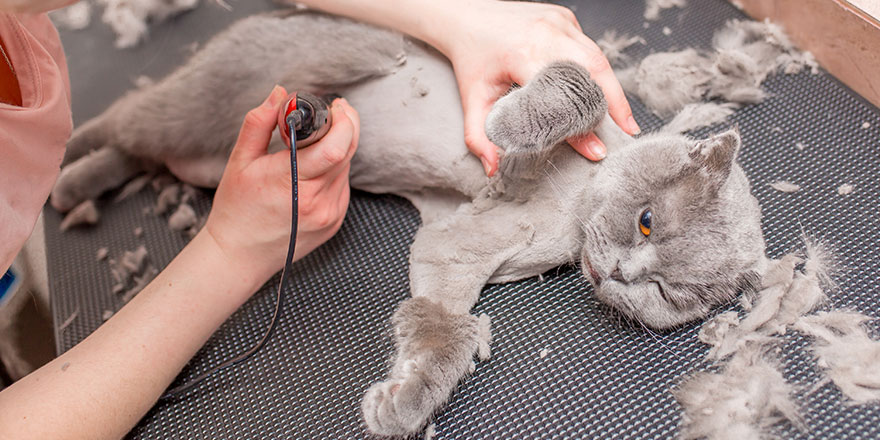
Yes. However, shaving a cat is not recommended for aesthetic reasons because cats need their coats in day-to-day life to be comfortable and properly protected. That being said, there are quite a few reasons for cat parents to have to shave their feline friend, most of which are related to health complications, entanglement, matting, or accidents that could cause fur removal to be the necessary course of action.
It’s also worth mentioning that cats are skittish creatures by nature and are not likely to enjoy being shaved. Therefore, we would only recommend a cat owner shaving one’s cat if they are confident in their abilities and have a calm cat that has complete faith and trust in its owner.
Reasons For Shaving A Cat’s Coat
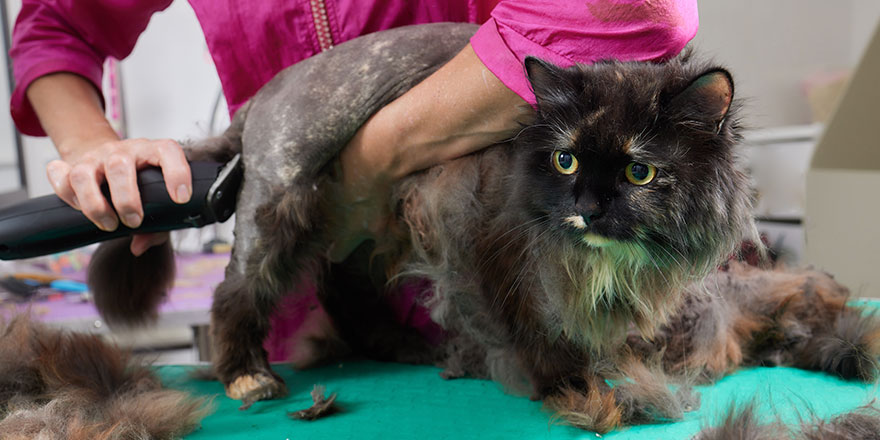
There are a few reasons that may lead to cat owners having to shave a cat, all of which are perfectly valid and are looking out for the wellbeing of the cat itself.
To Help Keep Them Cool
All cats shed fur during the warmer months. However, some cats, such as long-haired cat breeds, can still have difficulty dealing with the hot conditions, and shedding hair might not be enough. For those cats with excessive hair growth, some cat owners choose to shave their feline friend to a more manageable length to help regulate the cat’s body temperature.
The grooming process is not generally stressful for cats that are shaved regularly like this, as they’ve been brought up with it since they were kittens. Many dog breeds undergo the same regular grooming schedule as part of their basic care.
To Remove Severely Matted Fur
Severely matted hair is a cat owner’s worst nightmare when grooming. Most short-haired cats don’t tend to struggle with this problem. However, it is still possible that a short-haired cat might roll in something that could become caked into the fur and have to be cut away – such as paint, mud, feces, or cat food.
Matting can also occur in short and long-haired cats equally if they are on a particularly bad diet which causes the hair to become dry and coarse, preventing shed hair from falling away properly. You may also find our article on How to Safely Demat a Cat useful.
To Treat Skin Conditions
Cats that experience skin problems caused either by allergies or conditions they were born with may need shaving for the condition to be treated effectively. This is often seen with cats that struggle with health problems such as:
- Rashes
- Hot spots
- Scabbing
- Flea allergies
- Food allergies
- Eczema
- Miliary Dermatitis
- Sores
- Scale
- Ingrown hairs
To Gain Access To Certain Areas
Cats requiring medical intervention for a problem such as skin cancer or an internal growth like a tumor will likely need shaving down to the skin to access the problem area. This is because your cat’s hair can prevent a veterinarian from properly assessing the problem. A cat’s hair can also get in the way during surgery or even create a risk of infection.
How To Shave Cat Fur
If you are thinking of shaving your cat yourself, there are several key points you must consider. First, you need to know your cat’s temperament and ensure that your cat is comfortable being handled for you to get to any areas you deem necessary. Make sure you have clippers capable of doing the job quickly and easily. And lastly, you need to try and get the shave done quickly but with minimal stress to your cat to prevent them from squirming, potentially leading to you nicking your cat’s skin and causing lacerations.
With that in mind, here are the steps you need to follow if you think you need to shave your cat:
1. Figure out what needs shaving
Suppose you have to shave your cat for a particular reason, so as a patch that has become matted or to get to a specific area to care for it, you need to consider how you want your cat to look afterward. If you’re not particularly worried about your cat looking patchy, or you think trying an entire style on it will be too stressful, you can crack on with shaving.
However, for any owners wanting to make their cat look smart and tidy once the cut is done, try to plan with the style you’re aiming to achieve.
2. Pick the right tools for the job
Believe it or not, human clippers are not ideal for clipping a cat’s coat. The thick, long hair takes a little more effort than a human clipper is just not capable of doing. Therefore you should aim to stick with an animal clipper specifically designed with additional power and blades capable of making easy work of a cat’s thick fur.
Selecting electric clippers is also a better option than scissors as they will get the job done much faster – reducing stress. Furthermore, you might want to consider a pair of rubber gloves for yourself, both to protect you from the possibility of scratches by a panicked kitty and to reduce the risk of hair splinters.
3. Brush the fur as much as possible
Long-haired cats, in particular, tend to become matted in areas that aren’t immediately visible. So it’s best to try and brush out the fur as much as possible before you start. If you’re having a tough time with it, you can use a detangling spray or sprinkle cornstarch or talcum powder over the fur to coat it and help loosen up the more stubborn knots or matted fur.
If the reason for having the cat is due to severe matting, do your best at releasing as much fur as you can before you start. This will make the process easier for both the cat and the person shaving it.
4. Ensure the cat is calm
Keeping our furry friends calm is crucial to an easy haircut. Most cats don’t take well to having loud clippers buzzing against their bodies, especially when it comes to a belly shave, as the belly is an extremely vulnerable area that cats actively work to protect. So once you’re done brushing your cat, give them some time to relax again before you switch on the dreaded clippers.
5. Clip carefully in the right direction
When you shave a cat, you should pull the skin taut as much as possible without causing discomfort to the cat – this will help prevent the hair clipper blade from catching at the cat’s skin and causing lacerations. These lacerations will cause additional irritation that your cat doesn’t need.
You must also always clip in the direction of the hair growth. If you shave against the flow, there’s a high chance you could catch at the hair, which would be uncomfortable for your cat and likely cause them to react in a less-than-ideal fashion, which could lead to injury to the cat but also the owner if they lash out.
6. Take frequent breaks if needed
Some cats do better with a quick shave, whereas others require regular breaks to regain their composure. You may even find that you need to leave your cat half-shaven for half an hour or so before continuing.
7. Avoid any knowingly sensitive areas
If you know your cat will react badly when you pass over a certain area, it may be worth avoiding the area entirely until you’ve finished the rest of the cut. You should only carefully approach the problem area with additional precision and care. You may even want to use a pair of shears for more accuracy and less noise.
8. Brush away loose hair
A shaved cat can become extremely irritated by loose hairs post-shave, causing sore skin and itching. Therefore, when you shave a cat, you should ideally give it a thorough bath and brush once you’re done to remove any excess hair. Alternatively, you should at least brush the cat all over with a dense soft-bristled cat brush to remove the loose hairs as comfortably as possible.
When To Approach a Professional Cat Groomer
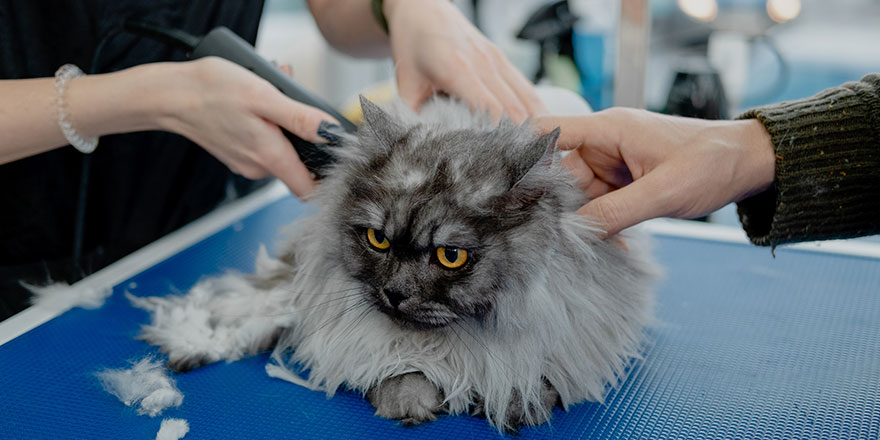
If your cat is more highly strung than other cats, you may want to contact a professional groomer with more experience in keeping a cat calm when it comes to cutting a cat’s coat. Professional groomers will also be more knowledgeable on caring for a cat’s skin while cutting the fur. Some cats have thin skin that can be easily damaged during grooming if additional care isn’t taken.
It is also recommended that you take your cat to a groomer if your cat’s hair is in particularly bad condition and you’re worried that you may hurt your cat when trying to trim its fur, or even if you’re not entirely sure how to go about it, to begin with. Using a groomer when you’re not confident in doing it yourself is a perfectly acceptable thing to do. Cats pick up on things like nerves, and it will likely make your kitty nervous in response which could have unfortunate consequences.
Seeking Veterinary Advice
If you think your cat might be experiencing one of the skin conditions listed above, it would be best to consult your veterinarian before going about shaving your cat, as they will be able to assess the situation and decide the best course of action. In some cases, shaving a cat will not help the problem in any way and could instead exacerbate the problem.
Conclusion
Yes, you can shave your cat if you need to. Long-haired cats often require regular grooming to prevent mats, deal with excessive shedding, and regulate their body temperature in warmer environments. However, short-haired cats don’t typically need to be shaved or trimmed unless there is a particular reason for it – usually about their health. Cats that experience regular cat grooming from birth will likely have adjusted to the experience and be fine with being shaved at home by their owner. However, cats that go through infrequent grooming may start to view it as more of a traumatic experience, meaning you may want a professional groomer to step in.
We certainly hope this article has helped you to decide the best course of action when it comes to shaving your kitty! Don’t be ashamed if you’re not confident doing it yourself (with such vicious claws at the cat’s disposal, who could blame you?); just do what’s best for your feline friend, and everything will be fine.
Sources:
- Wendy C. Fries, Should You Shave Your Pet for Summer?, WebMD
- Jennifer Coates, DVM, Is Shaving a Cat a Good Idea to Keep Them Cool in the Summer?, PetMD
- Tammy Hunter, DVM, Grooming and Coat Care for Your Cat, VCA Hospitals
- Heat Wave Approaching! Should You Shave Your Pet?, The ASPCA



